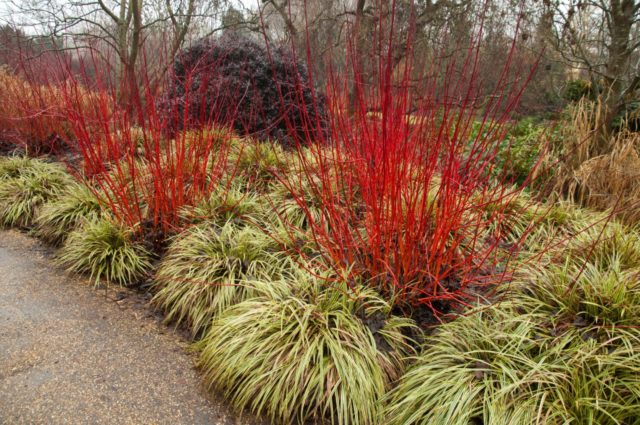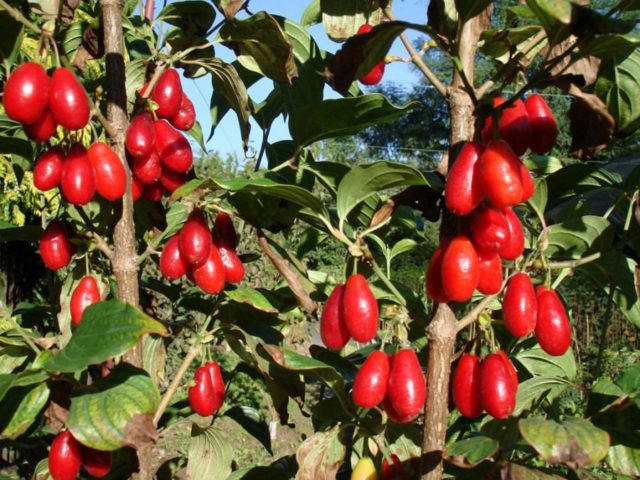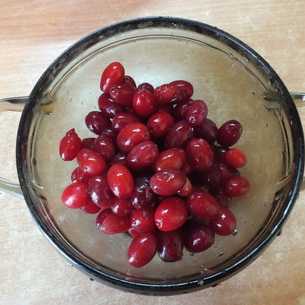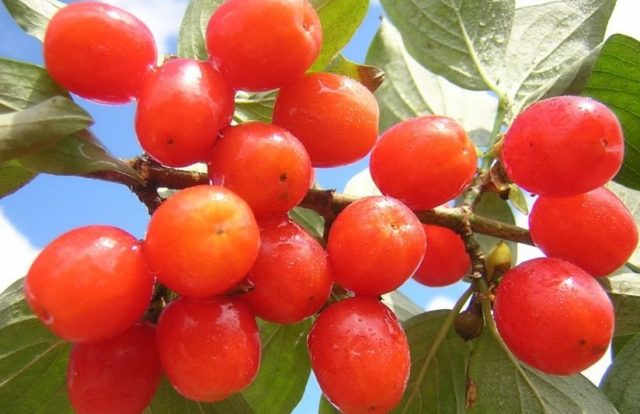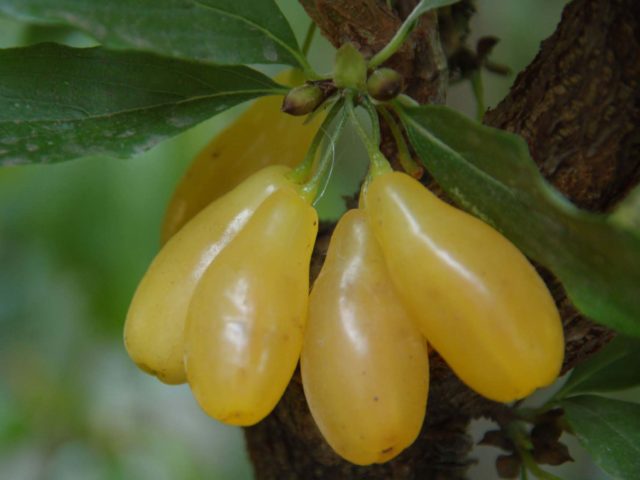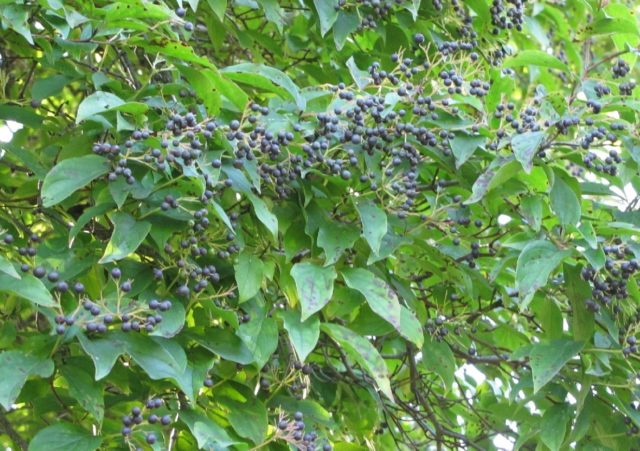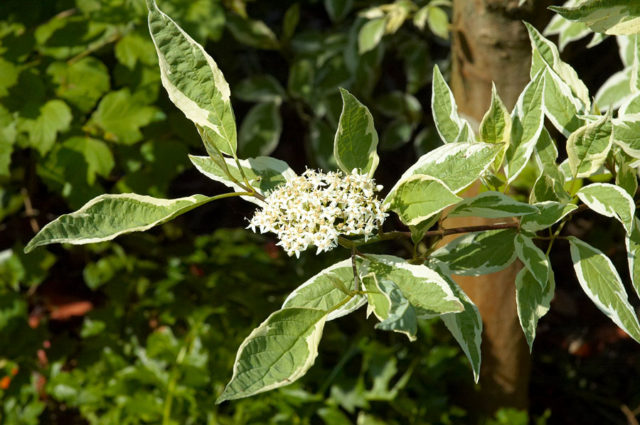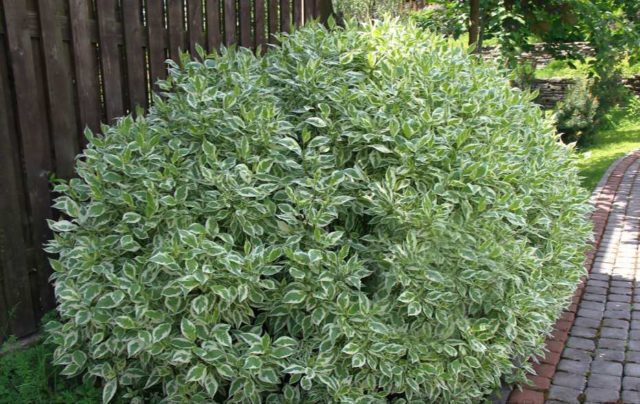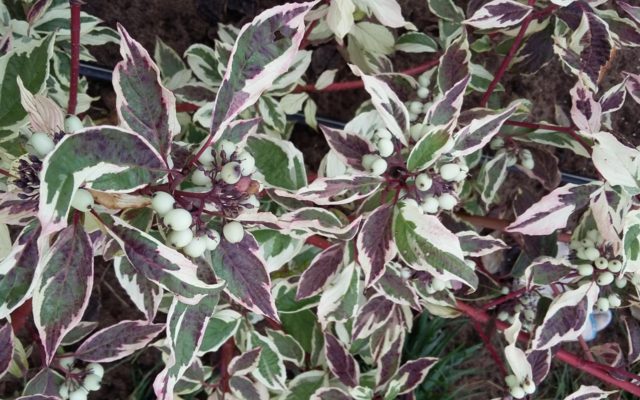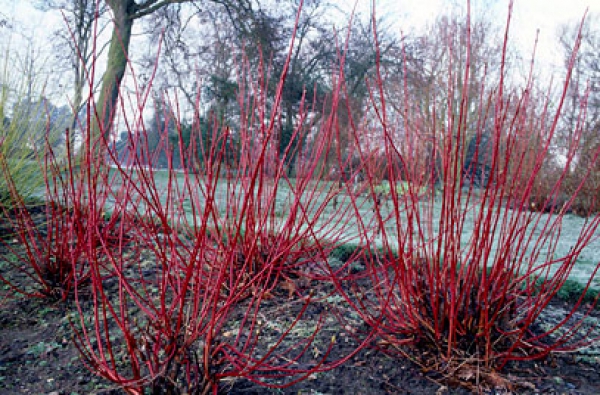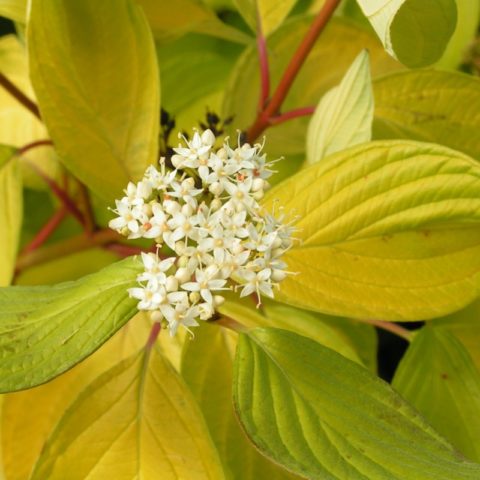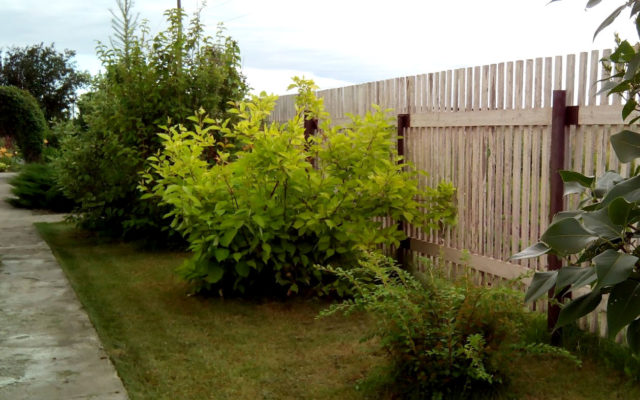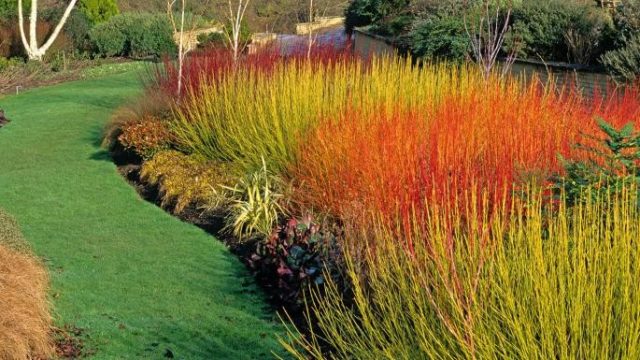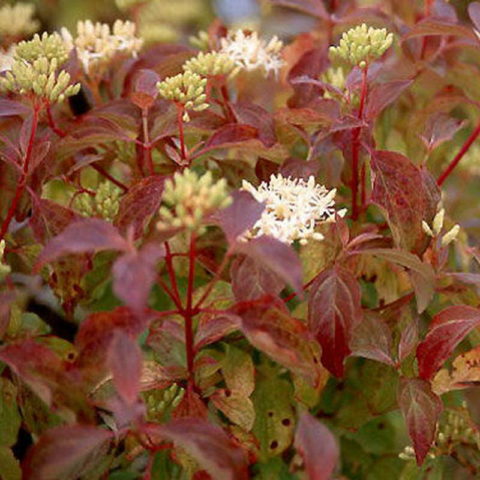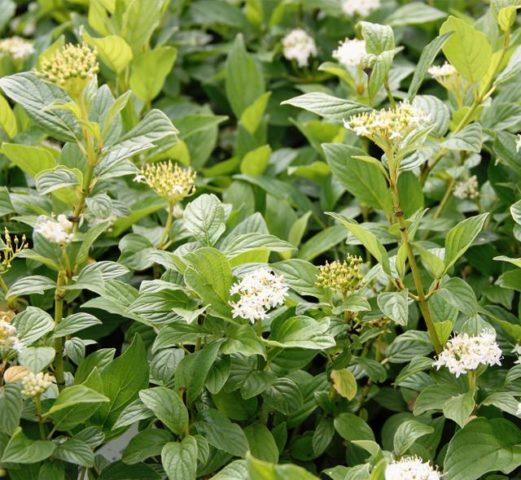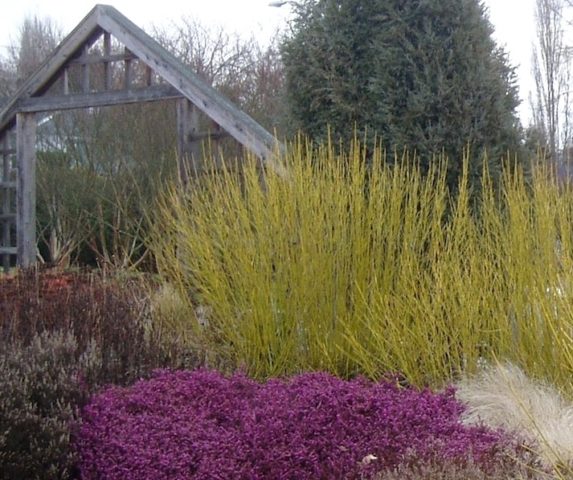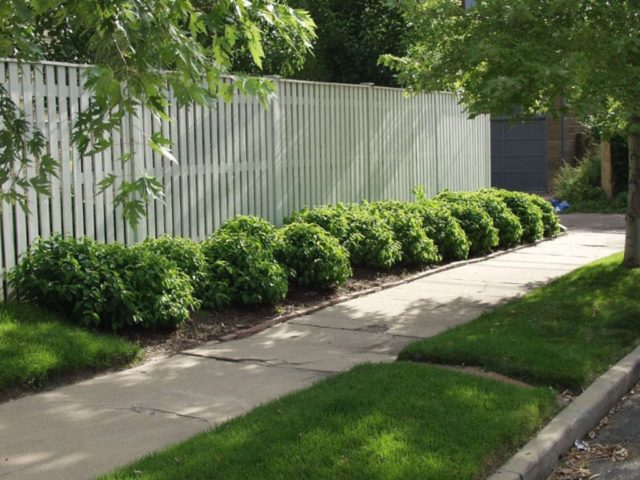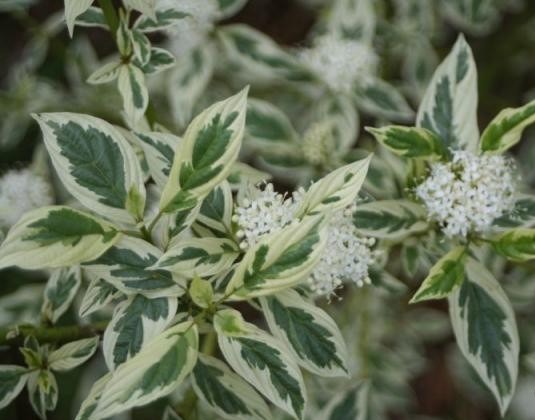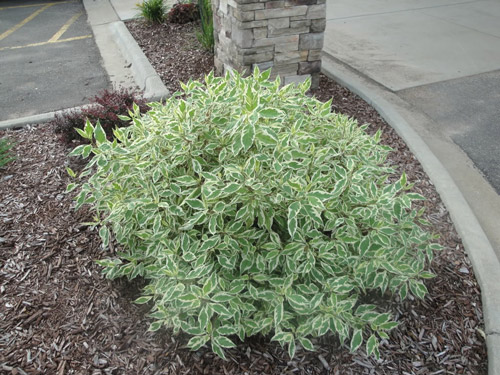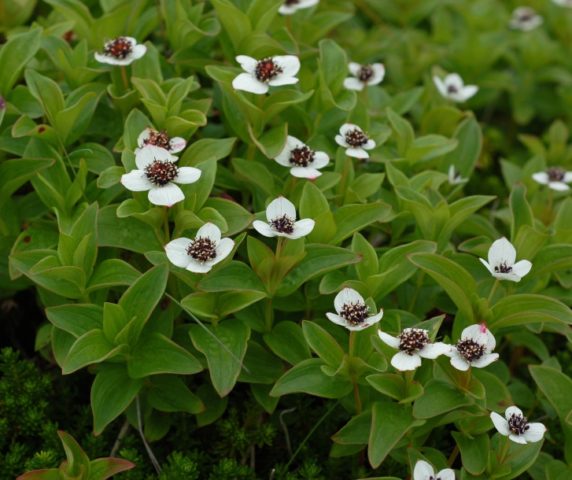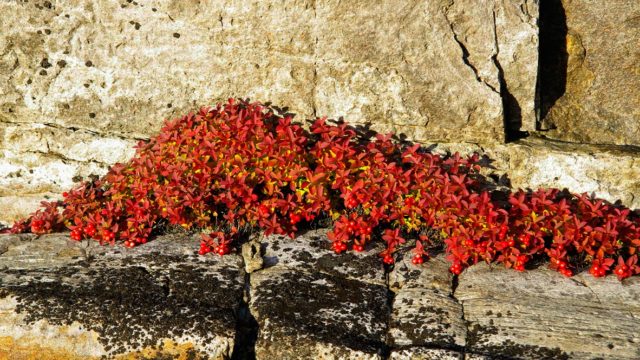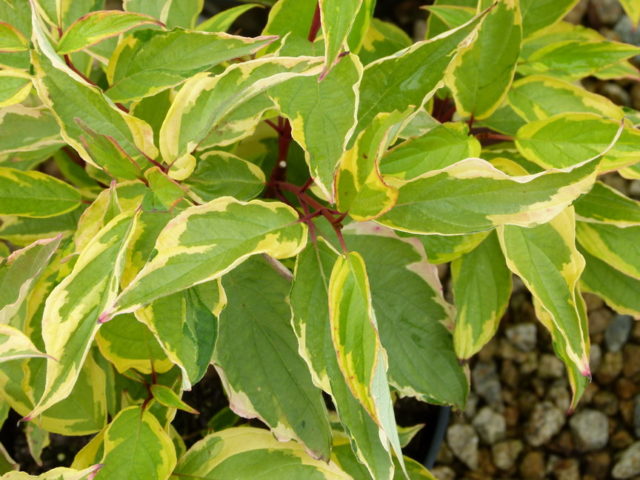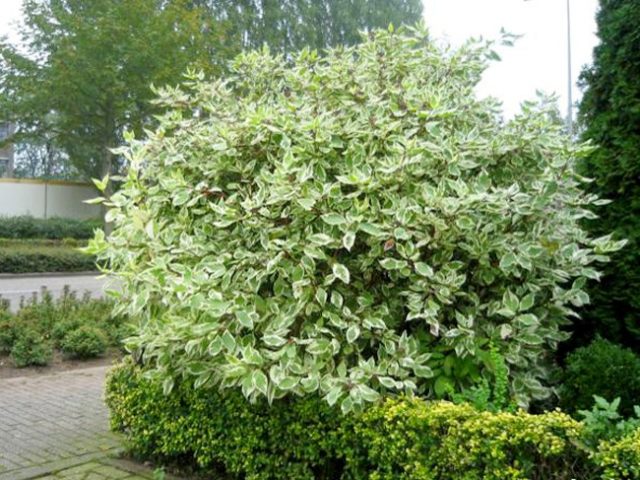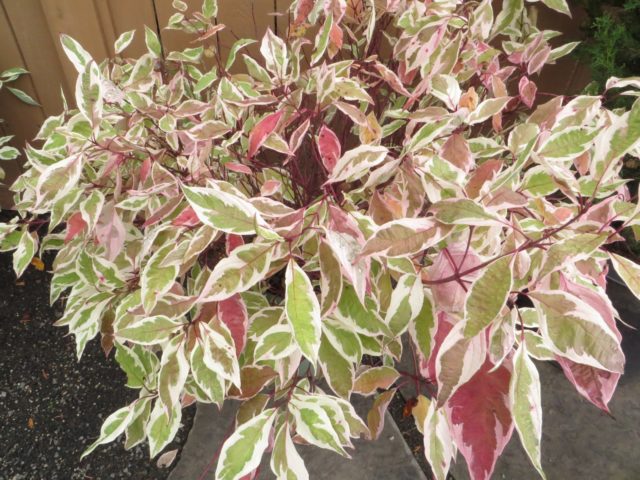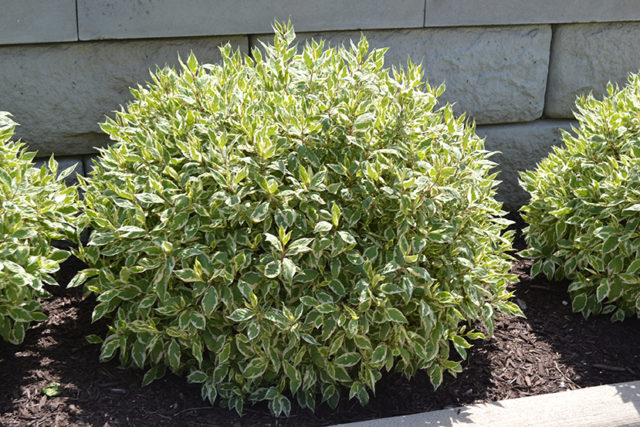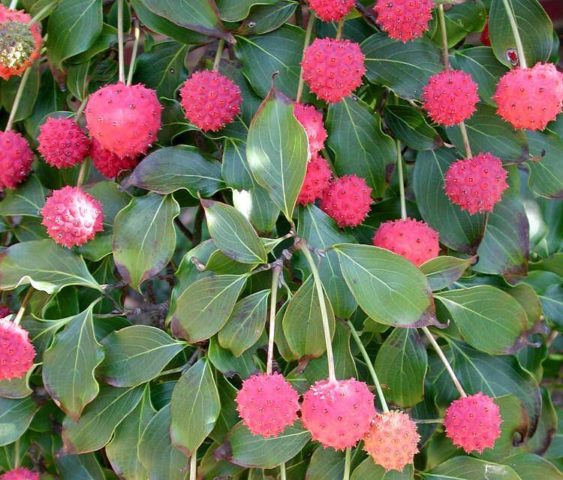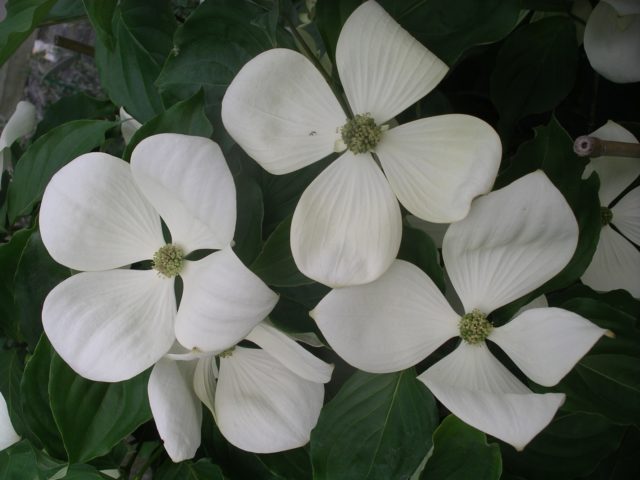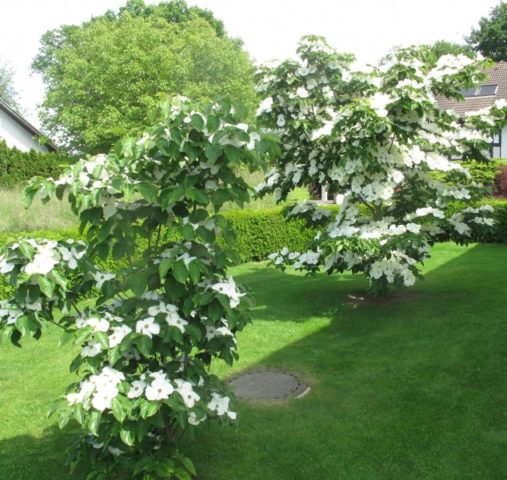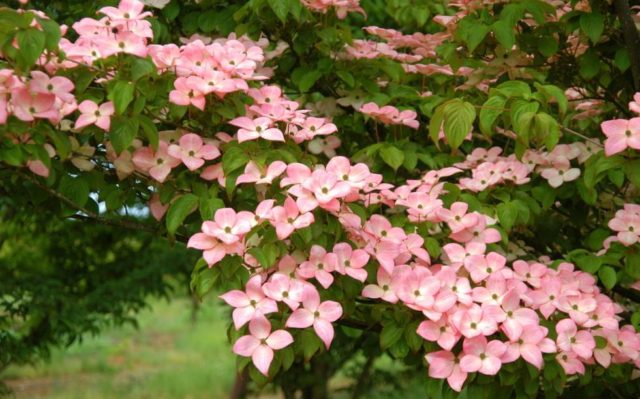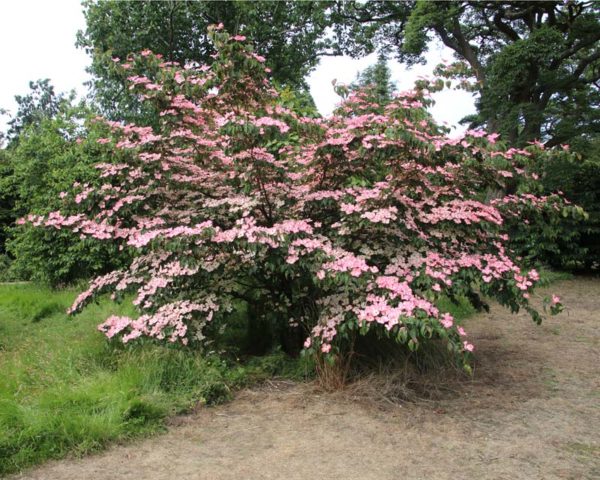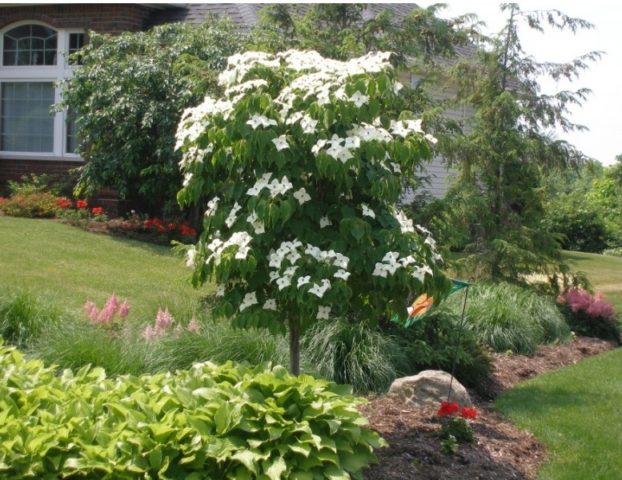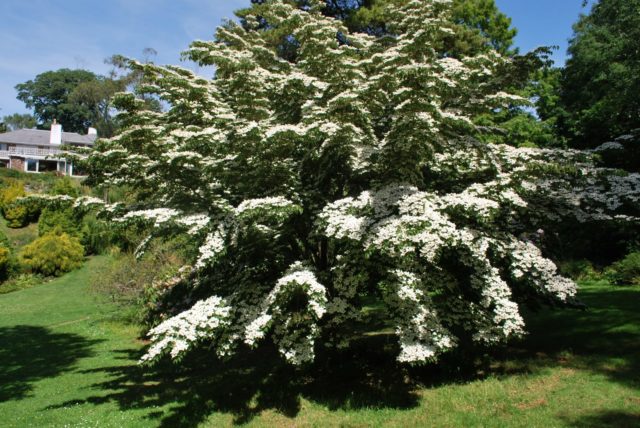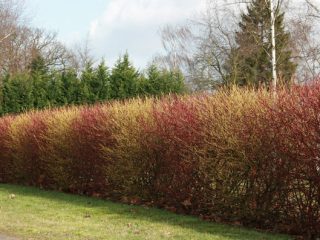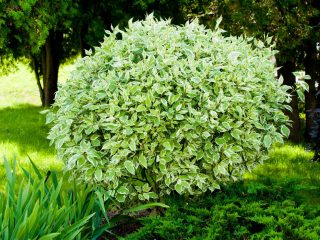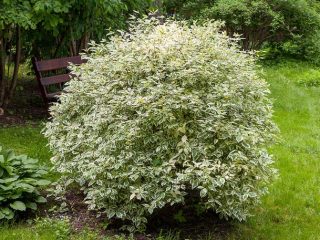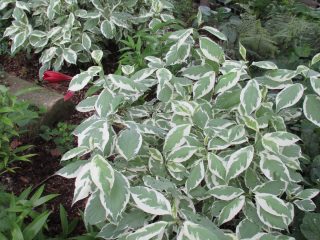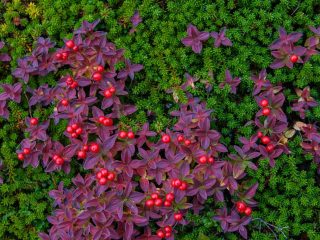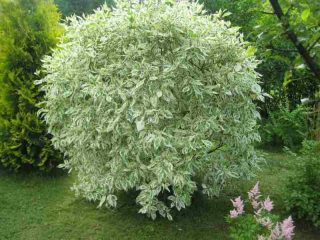Content
Photos, types and varieties of deren help to concretize the desire to have a spectacular decorative shrub in your backyard. Almost all varieties are unpretentious, winter-hardy, shade-tolerant, easily take root and reproduce. Groups of bushes create interesting compositions in summer, autumn and even winter.
Deren's description
Derain, or svidina, is known for its durable wood. It occurs in the form of a tree or shrub with a height of 2 to 8 m. The varieties of deren are bred with bark of various warm shades and variegated foliage, picturesque in summer and autumn. By autumn, small berries are formed from nondescript flowers characteristic of most varieties: inedible drupes of blue or white color. The roots of many species are branched, powerful, located shallow from the surface.
The use of deren in landscape design
Turf, which is resistant to growing conditions, is planted for urban landscaping. In garden compositions, the bush is plastic, it combines and gets along with various cultures, which is clearly visible in the photo of deren in landscape design:
- species with variegated foliage of white or yellow shades highlight a shady area or a gloomy wall of conifers;
- although many varieties are versatile, most often shrubs, which lend themselves to shearing, are used to create hedges from deren with a height of 0.5 to 2 m;
- planted on the edges of the garden massif and as undergrowth;
- by selecting plants of different colors, designers create colorful ensembles that reveal their splendor in the cold season and enliven a frozen garden;
- the turf trees are amazed by the elegant color of the leaves in crimson-purple tones in the fall, the bush is chosen as a soloist against the background of deciduous trees;
- often plants of variegated varieties, formed by a ball, act as a bright tapeworm on lawns;
- 2-3 deren bushes are planted in the foreground to visually deepen the garden space.
Types of deren with names and pictures
Breeders have enriched almost every kind of deren with different varieties.
Derain male
This species has edible fruits. Derain male - dogwood, which grows in the form of a tree up to 8 m high or a spreading bush 3-4 m. The species reproduces:
- seeds from sweet and sour fruits with a refreshing taste;
- layering from drooping branches;
- offspring.
It grows as a long-lived wild plant in the moderately warm climate of Asia, the Caucasus, and the Crimea. The dark brown bark exfoliates, light green leaves are large, 9-10 cm long. Yellowish flower clusters with small corollas bloom before the leaves. For the ovaries, a pollinator is needed - another 1 bush is nearby. Oval bright red or yellow berries ripen by September. Different varieties of dogwood have been bred for the middle lane, including those with decorative foliage.
Vladimirsky
A high-yielding variety of male deren, famous for the largest fruits, weighing 7.5 g. Berries are bright red, elongated bottle-shaped, uniform. Ripen from August 16-17 to September.
Grenadier
Medium-sized dogwood tree with annual fruiting. The dark red berries weighing 5-7 g have an oval-cylindrical shape. Ripen early, from 5 to 16 August.
Coral Stamp
Medium early variety, ripens on August 17-23.Drupes are bright coral, mixed shades of orange and pink. The shape of the berries is barrel-shaped, weight 5.8-6 g.
Tender
Mid-early variety of male deren with yellow bottle-shaped berries. The fruits of a pleasant sweet and sour taste ripen from August 17-18.
Derain female
This species is a wild plant of eastern North America. In culture, it grows up to 5 m, crown width 4 m. Female turf blooms for almost a month, but late: from July 14 to August 10. Inedible blue drupes ripen by October. In our country, it is not found on sites. There are only a few specimens in the State Botanical Gardens.
Derain white
This decorative type, called white svidina, or Tatar, is the most common. A photo of a white turf shrub displays its characteristic feature: erect stems with red bark, 2-3 m high. Large leaf blades are dark green above, gray-white below. Before wilting, their color changes to red-purple. The flowers are small, creamy white, bloom until autumn, when there are already formed inedible white berries.
Elegantissima
It stands out with gray-green leaves with a narrow white stripe along the edges. The variety retains its color even in shade conditions. In autumn, the leaf blades become orange-burgundy. Reddish stems rise up to 3 m, grow back easily after heavy pruning is recommended.
Sibirica variegata
In winter, the stems of this variety against the background of snow create the impression of a coral fireworks thanks to the bright bark. Low shoots are dense, leaves are green-white.
Aurea
The variety pleases during the warm season with bright green-yellow dense foliage. The bush is compact, 1.5-2 m high, with a spherical natural crown. Striking with the contrast of lemon leaves and branches red colors.
Derain red
Svidina blood-red grows up to 4 m. Young drooping shoots are green, then acquire a red-brown or yellow tint. Densely pubescent leaves are light green underneath. White buds create large, 7 cm, inflorescences, bloom in May-June. The shrub is beautiful in autumn, when ripe berries turn black against the background of burgundy leaves.
Variegata
The variety is lower than the maternal form, 2.5 m, the shoots are the same green-brown. In areas where it is constantly under the sun, the crust becomes brighter. The pubescent leaf blades are bordered with white stripes. By September, they acquire a crimson hue.
Midwinter fier
Shoots are 1.5-3 m high, leaves are light green. According to the name, the variety reaches its peak of decorativeness in winter. On the snow carpet stand out bright red with orange, low shoots of a dense bush.
Compressa
The blood-red deren variety got its name from its small wrinkled leaves. The plates are dark green, curved. Shoots are low, erect. There is no flowering.
Derain offspring
The natural range of the species is North America. Shrub similar to derain whitebut gives a lot of root shoots. Its long, flexible branches that touch the ground are easy to root. Oval leaves up to 10 cm long, small yellowish flowers. Drupe is white. The shrub is used in landscaping to strengthen the slopes, the device of dense hedges, given its ability to give numerous offspring.
Flaviramea
The variety rises up to 2 m. Growing shoots with bright green-yellow bark. The branches are flexible, a bush with a spreading crown.
Kelsey
Dwarf form of deren. It grows only 0.4-0.7 m. The crown of the bush is wide, formed by branches with a light-yellow bark, turning red towards the tops.
White Gold
The bush is high, up to 2-3 m. The bark of flexible, long branches is yellow. Large leaves have a noticeable white border. Yellowish-white petals bloom from the buds.
Derain Swedish
This is a type of tundra plant, a shrub, common in the north of both hemispheres. Herbaceous shoots 10-30 cm grow from a branched creeping rhizome. The leaves are small, 1.5-4 cm.Small, up to 2 mm flowers, dark purple, collected in 10-20 pieces in inflorescences, which are surrounded by 4-6 petal-shaped white leaves 10-15 mm long. The spectacular bloom takes place in June, July, the berries ripen from late July to September. Red berries up to 10 mm mealy, tasteless, not poisonous. Dwarf bushes are beautiful in autumn, when the leaves are painted in bright warm colors.
Derain variegated
Such wild plants do not exist in nature. Variegat varieties were bred by breeders on the basis of white, red and scion dern. The variegation of the leaves is imparted by uneven stripes along the edges, as well as spots or strokes, which in some varieties spread along the plate. A vigorous shrub that recovers quickly after pruning. Withstands frosts down to -30 ° C.
Gouchaultii
Bushes are low, 1.5 m, dense. The leaves are bordered with a light yellow stripe. The flowers are creamy.
Argenteo marginata
The variety is high - up to 3 m, with a spreading crown, slightly drooping branches. The shade of the leaves is gray-green with a creamy white border. In autumn, the shades are rich: from lemon to ceramic.
Ivory Halo
A low-growing variety, a novelty, growing up to 1.5 m. Natural spherical crown in summer, silvery from the leaves, bordered by a wide strip of ivory color. In autumn it becomes crimson.
Derain Japanese
The species is better known as deren kousa. Natural area - Southeast Asia, where it is found in the form of a tall tree, up to 7 m. The crown is tiered, turning into a horizontal one. The bark of the trunk and branches is brown, young shoots are green. Glaucous below the leaves are large, up to 10 cm long and 5 cm wide. In autumn they turn yellow or become crimson.
In June, it dissolves small flowers, surrounded by 4 petal-shaped large yellow-green bracts. In August-September, edible seedlings up to 2 cm in size, pink in color, ripen: juicy, sweet-tart.
Venus
A beautifully flowering tree with 4 white rounded bracts. Withstands frosts down to - 20-23 ° C.
Satomi
It grows up to 6 m, a spreading, branched tree. At the time of flowering, pale pink bracts with a diameter of 8 cm are attractive. Non-frost-resistant.
Cornus kousa var. Chinensis
A vigorous tree up to 10 m. Elegantly at the time of flowering white large bracts 9-10 cm.
Features of caring for a turf shrub
Almost all types and varieties of deren are undemanding to growing conditions:
- TOizil suitable fertile, sufficiently saturated with moisture loam with neutral acidity.
- Derain female thrives on fertile, moist soil. Dislikes areas with stagnant water. The cuttings all take root.
- Derain white grows on wet sandy loam, near water bodies, in floodplains, is not afraid of the rise of groundwater, for which it is appreciated by gardeners with similar characteristics of sites. It can grow not only in partial shade, but completely under trees, the roots do not spread out. Withstands cold winters, after frost breaks it recovers well.
- Derain red grows well in calcareous areas, is not afraid of shade, lends itself to haircut.
- Derain Swedish propagated by seeds stratified for 3-4 months or by dividing the bush in the spring. The plant is frost-resistant, prefers partial shade, although it develops in the shade and in the sun. They are planted on loam, sandy loam, peat bogs with a slightly acidic reaction. Wet drained areas, including swampy areas, are suitable for planting. In the middle lane, collectors grow Swedish turf along with heather, since the crops are characterized by the same requirements for the composition, lighting and structure of the soil. The plant is provided with partial shade, especially in the middle of the day, humidity.
- Derain Kousa grows well on light soils, slightly acidic or neutral. Propagated by stratified seeds sown in spring, green cuttings or grafting. Withstands frosts down to - 17-23 ° C.
Plants are watered during drought, in spring they are fed with fertilizers with nitrogen, in summer they are supported with compost or peat. Pruning is carried out in the spring.All species are not very susceptible to diseases and pests, if you adhere to agricultural technology. An infusion of soap, soda or mustard is used against aphids. Use pesticides if necessary.
Conclusion
Photos, species and varieties of deren emphasize the diversity of the culture. Not all varieties will take root in the middle climatic zone. It is better to choose zoned among male, white, offspring and red derins, for which the care is minimal - watering in the heat and a haircut.
